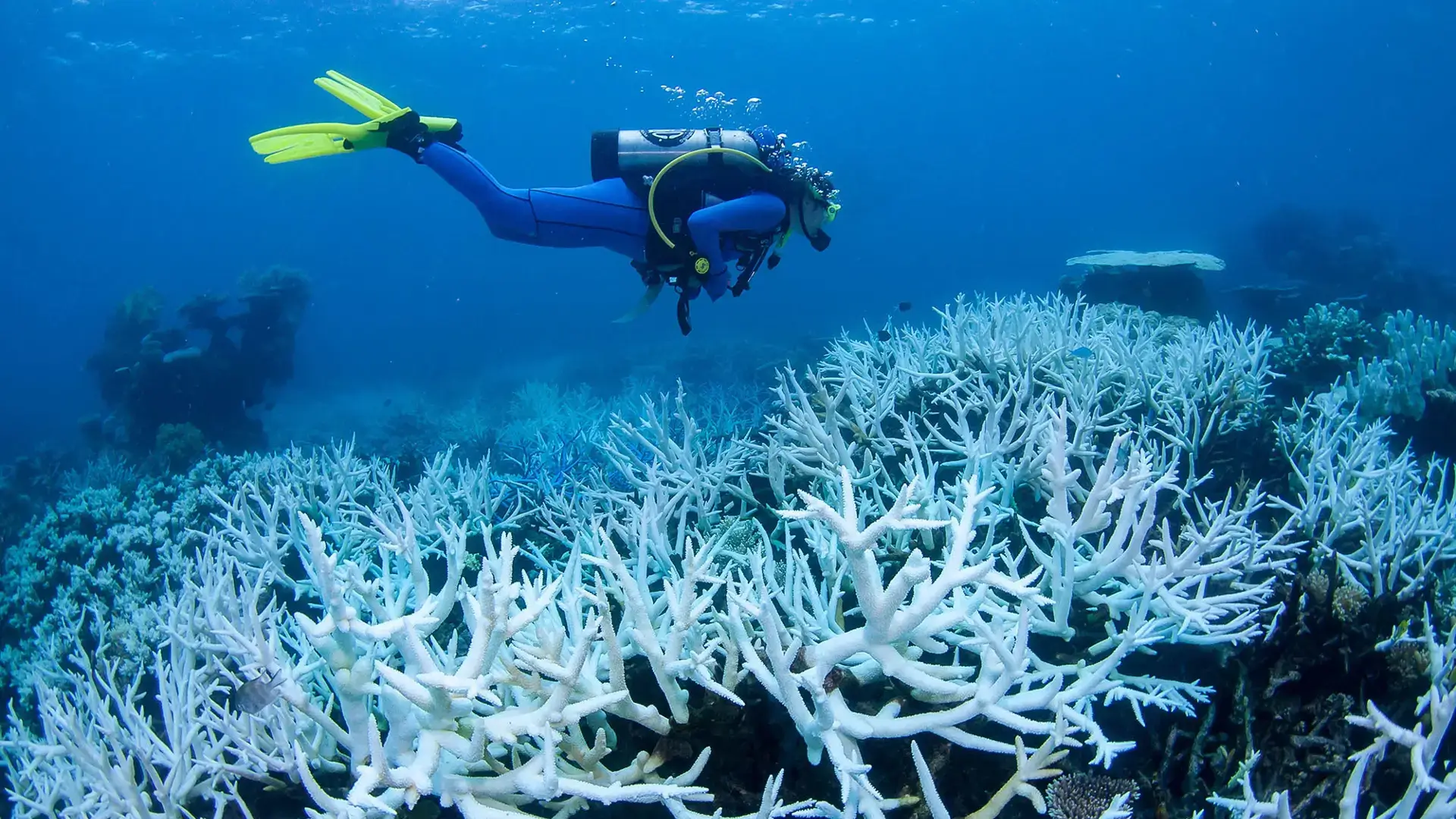The magnificent Great Barrier Reef, Australia’s national treasure, is experiencing a dramatic transformation due to the frequent occurrence of coral bleaching incidents. The escalating water temperatures, largely owing to climate change, have been identified as the primary culprit.
Marine biologists have noted that the Great Barrier Reef, one of the world’s most biodiverse ecosystems, is undergoing a significant shift. Rather than complete obliteration of the reefs, the ecosystem is transitioning into a new state, indicative of the resilience of nature.
Terry Hughes, a prominent marine biologist, posits, “It’s not about reefs dying or disappearing; it’s about reef ecosystems transforming into a new configuration.”
The structural integrity and three-dimensional habitat provided by the corals are crucial to the survival of numerous species, including fish and crustaceans. Consequently, the loss of corals adversely affects the entire ecosystem, disrupting the balance of biodiversity.
Coral bleaching, a stress response in corals, results in the expulsion of their vibrant resident zooxanthellae. The Great Barrier Reef Marine Park Authority, the Australian government’s reef management agency, recently released a report detailing the most severe mass bleaching event in the reef’s history. This report, based on extensive aerial and in-water surveys, revealed that nearly 40 percent of the reef is experiencing high or extreme bleaching, while three-quarters are showing signs of bleaching.
The bleaching is not uniform across the reef. The central and southern regions are suffering the most, with unprecedented heat stress levels being recorded across the entire reef. This is the fifth mass bleaching event in the past eight years, which marine biologists warn is not enough time for a proper recovery.
This issue transcends the Australian coast and has been observed in other parts of the globe. Reports have indicated that reefs worldwide are sounding alarm bells. Historical summer peaks of water temperatures have been surpassed by 2.5 degrees Celsius in some parts of the southern reef.
The National Oceanic and Atmospheric Administration of the United States declared the fourth global coral bleaching event on record recently, marking the second in the past decade. Sea surface temperatures broke records in 2023, with an annual average temperature around 0.3 degrees Celsius higher in the second half of the year compared to 2022.
The warming climate is propelling the reefs towards a future with less coral, and the composition of coral species is evolving. Fast-growing corals, like the branching and table-shaped species, are usually the quickest to recover. However, they are also highly susceptible to bleaching and have higher mortality rates during these events.
The observable changes in the Great Barrier Reef have not gone unnoticed by those who live and work around it. Historical images of inshore reefs laden with corals starkly contrast with the current situation. However, the diversity of coral species on the reef, estimated at around 450, offers a glimmer of hope for adaptation to the changing conditions.
The solution to the bleaching issue plaguing the Great Barrier Reef is clear-cut, according to marine biologists.
Terry Hughes emphatically states, “Reduce greenhouse gas emissions. Full stop.”
To ensure the survival and recovery of the Great Barrier Reef, there needs to be a global commitment to mitigating climate change.
